Charger NiteCore F1
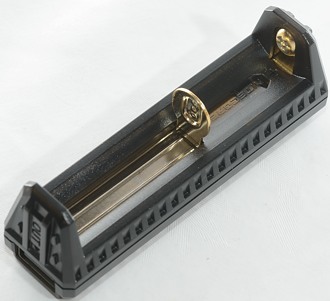
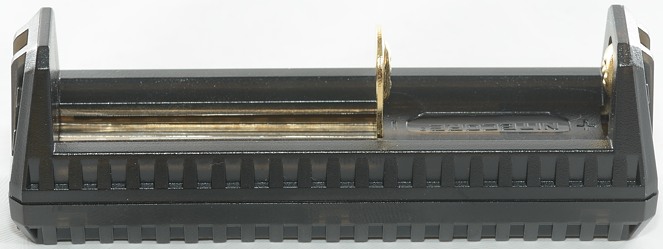
This charger from Nitecore is a very light weight single cell charger with two charge currents and power bank function.
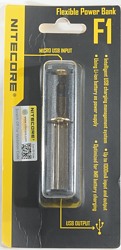
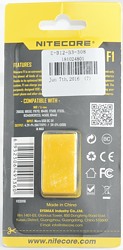
The blister pack lists some specifications, battery types and features.
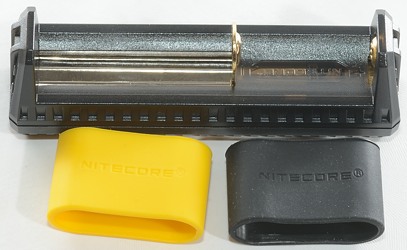
The box contains the charger and two rubber bands.
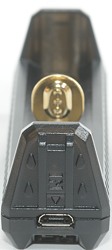
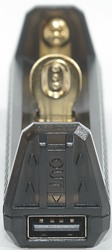
The charger is powered from a micro usb connector. The word "IN" is molded in the plastic.
The usb output is at the other end and the word "OUT" is molded in the plastic.
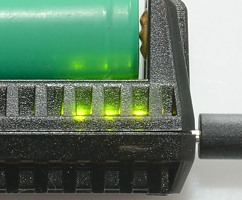
The charger has 3 leds hidden under the plastic, they have a couple of different functions:
When a battery is put into the charger they will show voltage: 3 flash on the first and 7 flashes on the next means 3.7 volt.
During charging and power bank they show the usual charge bar, i.e. 1, 2 or 3 leds on depending on power level.
When charging the flashing speed will indicate charge current: slow=0.5A.
All leds flashing means error (A small battery used for power bank).
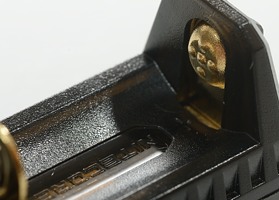
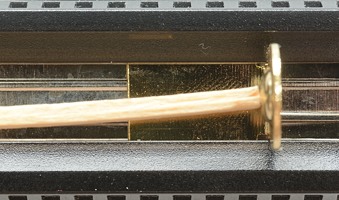
The slots uses the usual construction and the slider is very smooth. It can handle batteries from 29mm to 71.4mm long, that means just about any protected and unprotected LiIon cell.
Depending on the position of the slider the charge current will be 0.5A or 1A, the changeover is around 61mm.
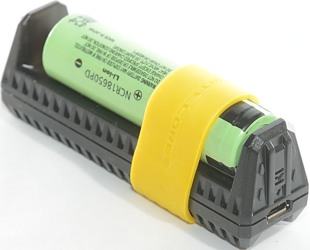
The rubber bands can be used to secure a cell to the charger when it is used "on the move".







The minimum charge current is 0.5A and that is a bit high for 10440 cells.
The charger can handle 71mm long batteries, inclusive flat top cells.
Measurements
- Around 61mm battery length it will switch between 0.5A and 1A charging.
- When charger has selected charge current it will stay with it.
- Below 1 volt the charger will sometimes charge with a low current.
- Between 1 volt and 3 volt the charger will charge with 60mA or 120mA depending on battery length.
- Above 3 volt regular charge current it applied.
- When not powered the charger will discharge with about 0.4mA
- Charger usb current consumption when battery is full is 40mA
- Charger will not restart if battery voltage drops.
- Charge will restart charging after power loss or battery insertion.
.png)
The charge curve is sort of CC/CV curve, but it goes out of constant current some time before it reach constant voltage. On this copy of the charger the termination voltage near the lower bound and with a fairly high termination current, the final cell voltage will be a bit low.
.png)
This cell has higher voltage and the charger drops to low charge rate. This has the advantage of lower termination current and the battery is filled a bit more.
.png)
Same with this cell.
.png)
This cell also drops to 0.5A charge current, but uses a termination current of nearly 200mA, the final cell voltage is a bit on the low side.
.png)
.png)
The two small cells are charger with 0.5A current and the low termination current. The end result looks fairly good.
.png)
Adding a 0.5ohm resistor in series with the usb power to simulate a weak usb charger or a long cable makes the charger drop to 0.5A current and then do a acceptable charging.
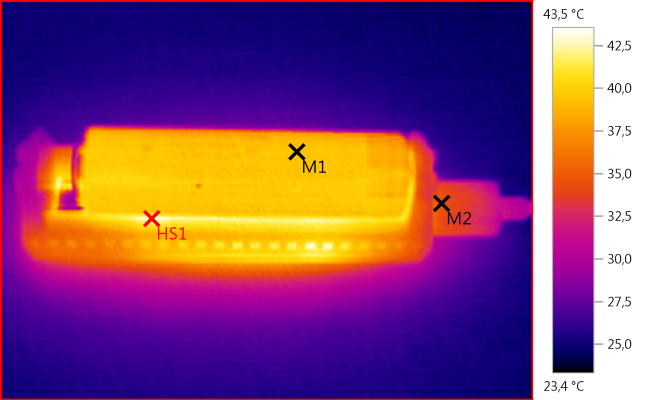
M1: 39,4°C, M2: 34,6°C, HS1: 43,5°C
The charger has some heat it needs to get rid of and some of that heat ends up in the battery. The battery do not get too hot.
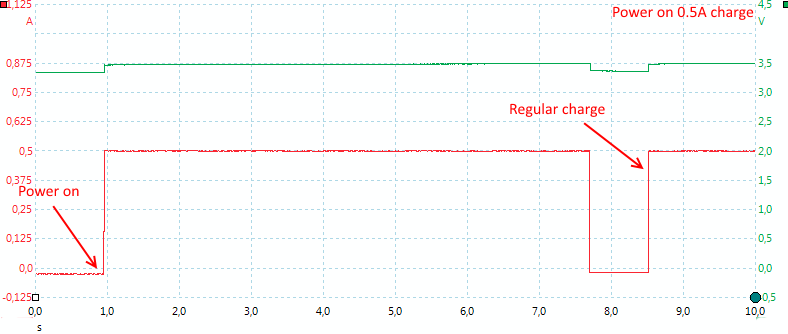
When putting a battery in the charger it runs a analysis phases, before it will start on the real charging.
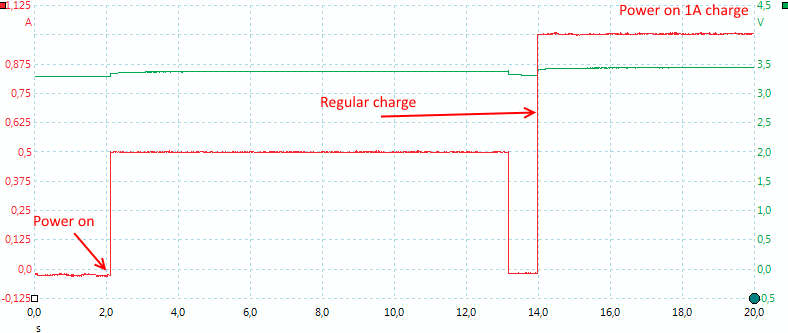
It works the same on 1A range.
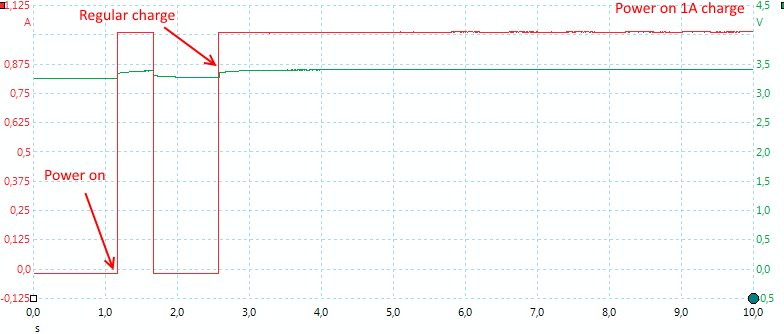
In this case the battery was in the charger some time before I applied power and the analysis was considerable shorter.
USB output
- When usb output is powered it uses 15mA from the battery
- When usb output is turned off it uses 0.4mA from the battery
- Without a battery the charger uses about 30mA from usb input
- Usb output is on while charging and powered directly from usb input.
- Charge can be used as ups, but output voltage will be a bit low.
- Usb output is coded as usb charger (DCP)
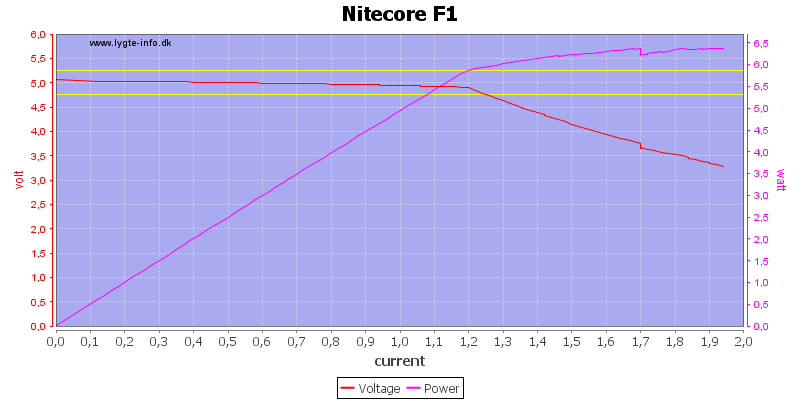
With a full battery the usb output can deliver about 1.2A before the voltage drops.
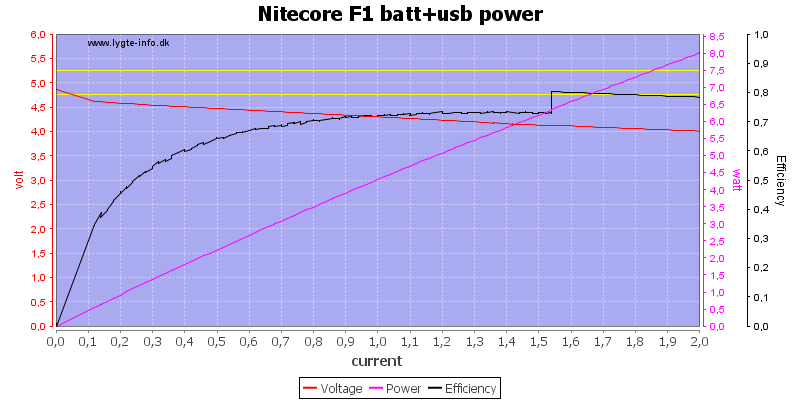
With external power connected that power is passed to the usb output connector, the actual voltage will be a bit low.
The jump in efficiency is because the battery charging stopped.
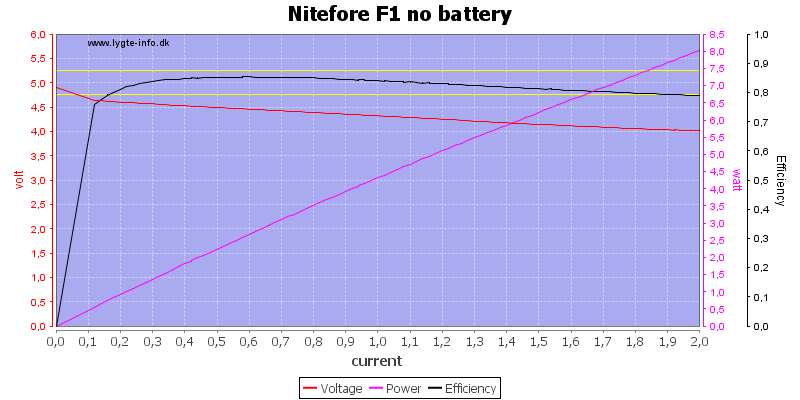
Removing the battery do not change the usb output function.
.png)
Running with 0.5A load works very well with good efficiency.
.png)
At 1A the output voltage cannot be kept stable when the battery voltage runs down.

There is not much noise in the output: 7mV rms and 50mVpp

And no change with increased load: 7mV rms and 53mVpp
Conclusion
As a charger it work fairly well, but the low charge voltage and high termination current means the cell will be a bit low in charge, As can be seen it do not happen to all cells, but mostly to fairly new 18650/26650 cells.
The automatic current selection makes it fairly safe to use with most battery sizes, but do not always provide the fastest charging (Some smaller cells can be charged at 1A).
The boost converter in the power bank is not really powerful enough to handle 1A, when the battery voltage get a bit low. The output from the power bank is very low in noise.
Notes
The charger was supplied by a Gearbest for review.
Here is an explanation on how I did the above charge curves: How do I test a charger
Read more about how I test USB power supplies and chargers


















.png)
.png)
.png)
.png)
.png)
.png)
.png)







.png)
.png)

